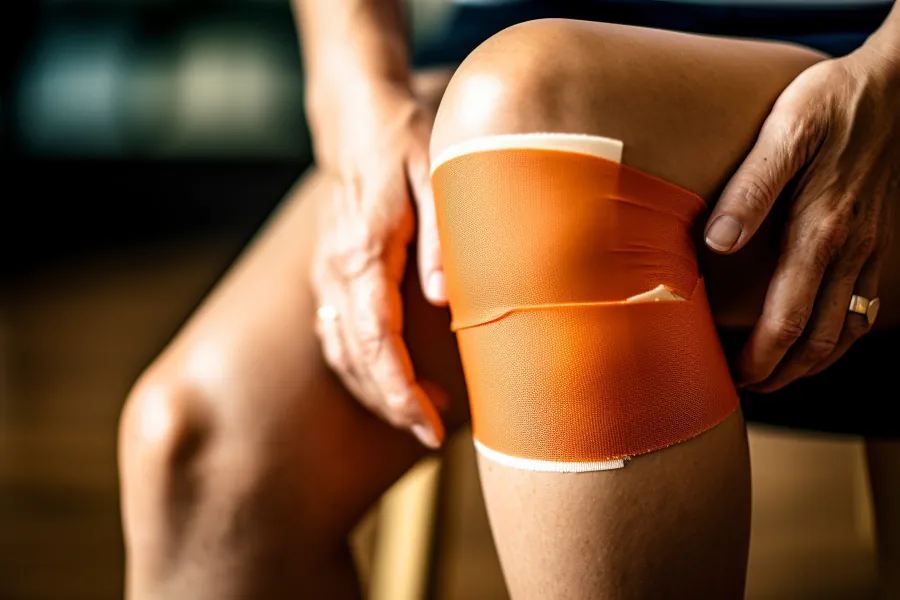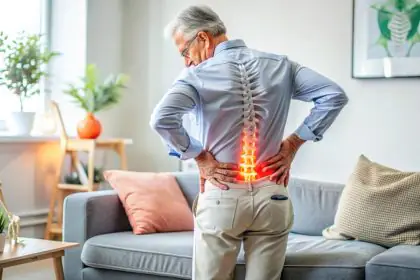The meniscus is a crucial structure in knee mechanics, providing stability and support during movement. A torn meniscus can lead to pain, swelling, and a locking sensation that hinders normal knee movement. This article provides a comprehensive overview of the diagnosis, causes, knee locking, and treatment of a torn meniscus.
What Are Menisci?
Menisci are two wedge-shaped fibrocartilage structures located within the knee joint. They act as shock absorbers, stabilizers, and weight distributors between the femur (thigh bone) and the tibia (shin bone).
Types of Menisci
Medial Meniscus: Located on the inner side of the knee.
Lateral Meniscus: Located on the outer side of the knee.
Diagnosis of a Torn Meniscus
If you experience sudden knee pain followed by locking, swelling, and difficulty fully bending or straightening your leg, it’s important to consult a doctor. To diagnose a torn meniscus, a doctor will conduct a thorough physical examination of the knee and may order additional tests such as:
- X-rays: Although X-rays do not directly show the meniscus, they can help rule out other possible causes of knee pain, such as fractures.
- Magnetic Resonance Imaging (MRI): MRI provides detailed images of the knee, including the menisci, allowing for precise visualization of the injury.
Causes of a Torn Meniscus
There are two main causes of a torn meniscus:
- Acute Injury: A sudden twist, sudden change of direction, or hyperextension of the knee can cause a tear in the meniscus. This often occurs during sports activities or accidents.
- Wear and Tear: With aging, the meniscus becomes more fragile and prone to tears. Engaging in repetitive activities that exert pressure on the knee, such as kneeling or squatting, can lead to gradual tearing.
Why Does Knee Locking Occur?
A torn meniscus can cause knee locking for several symptoms:
- Displaced Meniscal Fragment: A piece of the torn meniscus can get caught between the tibia and femur, preventing the joint from moving normally.
- Inflammation: Meniscus tear triggers inflammation in the joint, which can limit the range of motion.
- Muscle Spasms: Pain and inflammation caused by the injury can cause muscle spasms around the knee, restricting mobility.
Treatment of a Torn Meniscus
Treatment options for a torn meniscus depend on the severity of the injury, the patient’s age, and their activity level. Options include:
- Rest: In mild cases, rest, ice application, and compression may be sufficient for the meniscus to heal on its own.
- Medications: Nonsteroidal anti-inflammatory drugs (NSAIDs) may be prescribed to reduce pain and inflammation.
- Physical Therapy: Physical therapy helps strengthen the muscles around the knee, improve flexibility, and regain range of motion.
- Surgery: In cases of severe tears or when a piece of the meniscus remains trapped, arthroscopic surgery may be necessary to repair or remove the torn meniscus.
Recovery from a Torn Meniscus
The recovery time for a torn meniscus varies depending on the severity of the injury and the type of treatment received. Full recovery can take weeks to months. Physical therapy plays a crucial role in recovery, as it helps strengthen the joint and prevent future injuries.
Tips to Prevent a Torn Meniscus
- Maintain a healthy weight: Excess weight puts additional pressure on the knees.
- Warm-up and Stretching: Always warm up before engaging in any physical activity and stretch afterward.
- Muscle Strengthening: Exercises to strengthen the muscles around the knee can help stabilize the joint and reduce the risk of injuries. Consult a physical therapist to design a suitable strengthening program tailored to your condition.
- Use Proper Gear: Proper supportive footwear is essential for preventing knee injuries during physical activities.
- Avoid Sudden Movements: Perform movements with control and avoid sudden twists or changes in direction, especially during sports activities.
- Listen to Your Body: If you feel knee pain, stop the activity and give the joint rest. Ignoring pain can worsen the injury.
Conclusion
A torn meniscus can be a painful and debilitating injury. However, with proper diagnosis and treatment, most people can fully recover and return to enjoying their favorite activities. If you experience sudden knee pain accompanied by locking, swelling, or difficulty fully bending or straightening your leg, consult a doctor immediately.
Remember:
This blog is for informational purposes and does not substitute professional medical advice. Always consult with a doctor for an accurate diagnosis and appropriate treatment plan for your specific case.
FAQs
What are the symptoms of a torn meniscus?
Common symptoms include knee pain, swelling, a sensation of locking or catching when moving the joint, and difficulty bending or straightening the leg.
What causes a torn meniscus?
Causes can include sudden injuries due to abrupt movements or traumas to the knee, as well as gradual wear and tear due to aging and repetitive physical activity.
How is a torn meniscus diagnosed?
Diagnosis typically involves a detailed physical examination and specific tests such as magnetic resonance imaging (MRI) to confirm the injury.
What can I do at home to relieve the pain of a torn meniscus?
Rest, applying ice to the affected knee, elevating the leg, and taking over-the-counter anti-inflammatory medications can help alleviate pain and inflammation.
Will I need surgery to treat a torn meniscus?
Not always. Treatment may vary depending on the severity of the injury. In some cases, rest and physical therapy may suffice, while in others, surgery to repair or remove the damaged meniscus may be necessary.





